-
Posts
1,379 -
Joined
-
Last visited
Content Type
Profiles
Forums
Gallery
Events
Posts posted by Snug Harbor Johnny
-
-
Actually ... my Unimat can 'convert' to a mini drill press by putting a drill chuck on the spindle, unbolting the head stock, installing the vertical bar, mounting the head stock on the bar with levered pinion for downstroke, putting the milling table on the tool slide, and topping that with a mini vise. Its sort-of a pain, and to go back to a lathe one must reverse the process. Also, the Unimat is typically underpowered.
"All in one" type of tools have a certain amount of gimmickry involved - a friend of mine had a 'Shop Smith', that could be re-configured (with some fiddling) into a wood lathe, table saw, drill/mill press, spindle shaper, belt sander, jointer or a spindle shaper ... only one type of work at a time. The other example of "overkill" was the PBS 'The New Yankee Workshop' with Norm Abrams (Naahm) ... I mean this guy had every conceivable power tool for wood working in existence - multiple table saws, jointers, planers, biscuit joiners, mortisers, band saws, lathes, spindle shapers plus all sorts of specialty jigs and fixtures. THEN, after machining virtually every part by one machine or another - he'd pick up a chisel (good heaven's, a HAND tool) and say something like, "To clean up this corner, I'll need a couple taps with a chisel." Then, tap-tap - and the hand tool was put down.
More to my liking was 'The Woodwright's Shop' with Roy Underhill. The man has a respect for hand work and traditional tools ... with occasional power tools used - one only needs a few.
-
9 hours ago, Roger Pellett said:
Our craft (to me it’s not just a hobby) is so broad that the the tools required are largely dependent on the ship that you have decided to model. The most often used tool in my workshop is my drill press. While I seldom use it for the model itself, I often use it to fabricate Theo jigs and fixtures necessary to fabricate the parts for the model.
I'll second you on that, Roger. I have a regular sized bench-top drill press, and a 2-axis cross vise is mounted on the table (that cranks in the vertical axis). I can drill and mill with it. For modeling purposes, a miniature drill press would be nice ... maybe someday.
- mtaylor and Ryland Craze
-
 2
2
-
Patrick, looking at your series of photos got me thinking on yet another way to strop a block to an eye ... It seemed to work on a 4mm test block - it is an OcCre block that I worked on just a little to enlarge the hole and round the corners to make it look better. The line was made with Chuck's 'Rope Rocket' and just 3 strands of brown Gutterman poly sewing thread. 'Could have used tan, but the batch was for Vasa to be rigged in brown.
-
I found that a relatively narrow belt sander was useful for general shop work (furniture, metalwork), but have only used it for one application in model making - setting the table at a slight angle from the belt to adjust the angle of 2 deck cabins (made from solid blocks) where they meet the the fore and aft decks, respectively, on my Gorch Fock restoration. The builder had the face of the higher decks at a slight angle, as the hull had been cut from a single block of pine ... so I imagine that if shaping a block for a hull from scratch, the 'hogging' of material (after band sawing) would be made much easier with a belt sander. It was certainly helpful shaping pieces for repro wooden dolls of the Colonial era. I'm seeing some advantage to a solid hull versus P.O.B. - but each has its own plusses and minuses.
I think that the most useful wood modeling powered tools are a scroll saw (makes cutting-out curved pieces from stock a breeze), a mini table saw (super useful for straight cuts from various model stock - as a full size table saw is both overkill and too dangerous for small work) and a variable speed rotary tool (foot controlled, and there are very many things that can mount on the rotary tool for a particular job on the model) ... These are my 'go to' machines of choice. Obviously, higher priced quality tools are best in the long run, but if money is tight (many of us have Admirals to report to), you can get less expensive alternatives that will work, as long as you are aware of some limitations.
-
Thanks, Glen. Now that I think about it, ships in bottles are more likely to survive over long periods for a number of reasons; interesting to look at - so they can add to most any room decor, they don't take up a lot of shelf space, the light weight of the craft is resistant against damage if it secure on the inside surface of the bottle, easy to dust, easy to move or store. If someone no longer wants one, they can easily sell (e.g. yard sale) so they are far less likely to be trashed. So the model may pass through successive hands for generations, which is why having at least the builders name and build date visible by looking through the underside of the bottle is a good idea.
The completed Khufu barge I'm considering how to display can't be stuffed inside a bottle - but maybe a completely clear plexiglass case can be made in a similar way I've made cases for butterflies before. The sides are 'welded' together with plexiglass cement applied by the thin metal tube on the cement bottle. The cut edges can be polished smooth before assembly.
I'm appreciating the flexibility of working with wood, as I realized that the holes drilled for the corner railing uprights on the GF did not take into account that the railing wire will have to bend at a 90 degree angle AFTER passing through the ball forms in the posts. That will create an inward angle going to the next post in the new direction ... then the railings won't look the way I want them. So I filled the corner holes with toothpick and touched up with shellac, then drilled new holes just a little back from the former position. That way the bend in the railing will then go straight to the next post in the new direction. On the Ergenstrasse build, the posts are even further back from the 'corner', since the builder put a nice radius curve in the railings to assume the new direction in the scale being modeled. At my 1:100 scale, I'll just bend the rails at the posts.
Wood is great for realizing mistakes, or a better way to execute a feature or even making repairs, since it can be trimmed shaped glued as desired. Metal has got to be a tougher medium. Plastic has plusses and minuses, but I favor wood by far.
-
Since your building the Victory, 'though I'd post the image below. I've seen versions done with just the first sections of mast - a step beyond an admiralty model with stubs - and there is a suspended build of another ship I'll probably finish that way ...
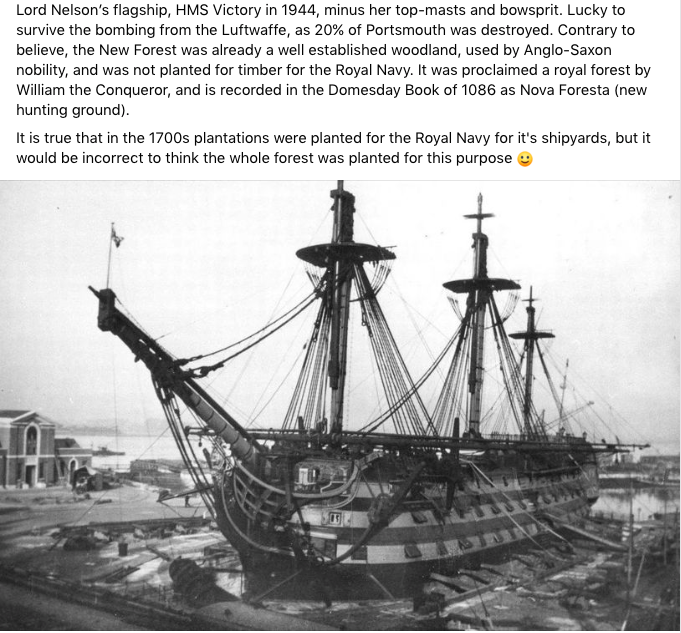
- JeffT, Mr Whippy and Old Collingwood
-
 3
3
-
A ship in a bottle I made over 50 years ago was mentioned in another thread, but I could not provide a picture because it's whereabouts was unknown. 'Seems it survived a couple moves with my Mom, and then was somewhere in my brother's house ... and he finally found it and I received it back when visiting yesterday (Christmas Eve). I didn't know much about proper rigging at the time, but its not bad for a first exercise. A better version is on my 'bucket list' now. I'll have to find 'just the right' bottle - high and narrow on its side - and this is another thing to look for in the many antique sellers to be found in SE Pennsylvania.
The wavy glass distorts things a bit (typical), and next time I should have 3 masts (barque rigged) - like the GF or Big T in her later years. Notes to self; have the back stays go to the masts (not the yards ... although that made it easier to untwist the masts once in the bottle, as those lines pass over the deck to the corresponding hole in the opposite bulwark ), add fine ratlines by gluing, paint hull, rig braces to beads on the forestays.
The masts were not hinged, but just fit into shallow holes in deck. Several dabs of slow curing epoxy were put on the inside of the bottle, and the collapsed vessel maneuvered with long tweezers to that place and allowed to completely cure. Then a dab of epoxy was placed in the holes for the masts (with a long wire as an applicator). The forestays attached to the fore mast had long ends at that time and came out the neck of the bottle. Long tweezers helped grip the base of the for mast as the stay lines were pulled to stand the masts up - the 2nd mast just following the first. The tweezers pushed the mast bottoms into the shallow holes and they were allowed to completely cure.
The fore stays did not go through holes in the bowsprit, so each one (in turn, from back to front) was positioned on the bowsprit with tweezers - and another tweezer end applied a dab of '3 minute' epoxy where the line was held on the underside of the bowsprit. After setting, another line was done (the line ends still coming out of the bottle) until all were done. Then after curing, a long X-Acto trimmed the lines at the bowsprit. Then a cork was jammed into the bottle neck.
Additional notes to self - work out making the masts hinged, because that will be less harrowing that 'planting' the mast ends into holes like I did (I recall that it was difficult to manage). I've seen hinges used on other ship-in-bottle MSW threads. Also, having the fore-most stays passing through holes in the bowsprit will be much easier to glue later.
Merry Christmas (or Festivus) and a Happy New Year in you shipyards, mates ! Johnny
- _SalD_, Keith Black, Wintergreen and 1 other
-
 4
4
-
No pics this time, as I'm prepping a lot of little parts. The decision was made to use Revell 1:96 internally stropped blocks for the larger ones needed, as they are close to scale (just a little over). I could work with 4 1/2 mm wood blocks (smaller ones give me trouble) but 1.) they are too much out of scale at 1:100, and 2.) they are externally stropped. The 3 1/2 mm Revell blocks are from a kit I happen to have on hand, but they can be found in several kits still available on Ebay or elsewhere. The bunt blocks will still be beads.
The plastic blocks must be completely painted. Also, I'm pre-painting the railing stanchions white. 'Soon time for Christmas break and lots of family obligations.
- mtaylor, _SalD_, Glen McGuire and 2 others
-
 5
5
-
I'd avoid using lead, as tin solder is readily available (and far less toxic).
-
-
'Decided to make a standing pin rail, and used toothpicks that come with shaped ends (for hors d'oeuvres ... mine weren't all that well formed, so I picked a couple and touched them up on the mini-lathe) for uprights, and a strip of mahogany drilled to accept uprights at each end - and pins in between. The deck was marked through the rail (before anything was added) for drilling. Then things were assembled and fixed in place with dabs of thin CA. Its hard to get everything in focus at close range with the crummy camera I have - but you get the idea. A little amber shellac will tone the uprights. I'll follow suit for rails elsewhere.
Pics of my rough sketches on belaying the lines follow. Rough, to be sure - just haven't wanted to spare the time yet to 'clean them up', as they are still subject to change.
- Glen McGuire, davyboy, Keith Black and 1 other
-
 3
3
-
 1
1
-
Sometimes days can go by with no progress, as I'm always pondering which course to take ... But once I forge ahead in some respect, much can be done. Now I often look back and think of how it might have been done differently or 'better' - but there is no point in doing so other than for future reference. The 'Holy Grail' of 'absolute' authenticity is virtually unachievable. Compromises in detail and scale must be made frequently. As with life in general, imagining 're-dos' is not productive.
There was an entire rear cabin missing from my restoration model, so I had to make a replacement that would 'blend in' with the ship as-built. So I took a scrap of ordinary furring strip, trimmed the width a little, then cut off to length. Mahogany doors and windows were trimmed form planking strips, then glued into place. Off-white paint was mixed and applied to the walls, and clear shellac to the darker wood. The cambered roof (by sanding) was an application of scribed decking stock commercially available. I still have to install the grab bars and tone the roof as needed, but I set it in the deck without gluing to take a picture.
A little paint perked up another deck feature .. a couple things still need to be added to it.
- Glen McGuire, ccoyle, Keith Black and 1 other
-
 4
4
-
'Harbor Rig' (w/o sails) has a lot to recommend it. Good golly, the virtual spaghetti of lines needed for a clipper under sail is daunting - as I'm finding out. Kudos for your fine artistry and excellent detail at every stage of construction. Your build was interesting to follow, and can be a valuable tool for future reference.
-
This is a long, tough build - and I can see why some start with a plastic kit and order PE sets to improve the result. My hat is off to your efforts.
- Canute, drobinson02199, mtaylor and 1 other
-
 4
4
-
'Learning the ropes' (lines, actually) is quite a process - and they continually evolve in nomenclature, purpose and configuration all throughout the history of sailing ships. I'm grappling with spaghetti now, seeking to reach a happy compromise on how to deal with the restoration I'm into now. Just thinking about how to proceed with restoring a scratch-build with no instructions often delays me many days while I just keep thinking of alternatives ... not wanting to do anything rash. Measure twice, cut once. Think before gluing.
-
2 hours ago, Jaager said:
If I were to place a bet on the situation, my money is on you having to write the whole thing off and concede the victory to your Ex.
The only one likely to profit from pursuing this is your lawyer.
Yeah - after my folk's divorce, they kept going back and forth legally over any perceived change of life status (each angling for changes in the payments originally agreed). After nearly 30 years of wrangling, the claims and counter-claims ultimately 'bounced off' each other and neither party gained any advantage ... but each had spent over $100k in the process, so the lawyers etc. made out. 'Brings to mind the case of Johndice vs Johndice in a Dickens novel, where after many years the case was decided for the plaintiff - but the estate was totally consumed in the long process. Then there was the story of a client who saw opposing attorneys drinking together in a bar after the conclusion of a case - "How can you two drink together as friends after arguing against each other in Court?" The lawyers said they were like scissors, and only cut what's in between.
- mtaylor and scrubbyj427
-
 2
2
-
This is a great project ... 'love the rivet work and other details !
- mtaylor, Mirabell61, Keith Black and 2 others
-
 5
5
-
Don Quixote: "Calm yourself Sancho, there is a remedy for everything but death." Sancho: "That may be the very one we need."
- Shipyard sid and mtaylor
-
 2
2
-
There is such a thing a 'fire brick' (or refractory brick), and they can be anything from a light ocher (tan) to a light orange-red ... but that is what I've seen in 'recent' times. What was used in olden days could have been (I'm not an expert) hot-fired brick, or those nearer to the inside of the pile of bricks built up for firing. The color varied with the clay. The bricks on the outside (per the traditional brick makers in Colonial Williamsburg, Virginia) did not get as hot - so were softer. These were used inside brick structures (having thick walls), with the more resilient bricks on the outside facing the weather. The bricks with somewhat 'charred' (darker) ends were utilized in a 'Flemish bond', that gave a decorative look to an exterior wall. Since hot fired bricks were used to make 'beehive' ovens - that could have an access opening on one side of a 'walk in' or 'open' hearth, or they could be an outside structure near the kitchen, but not attached, and advantage in hot weather.
-
-
-
How 'decent' is the price? (assuming the kit is complete and unbuilt) At only around 20 years old, I don't think the wood will be bad. I have a couple 50 year old kits and a 30 year old kit - and the wood is still good. The price for a new AL Bounty kit now ranges between $420 - $460 ... but a new Bounty from OcCre is about $100 less. I haven't seen these kits, so I can't say if the AL Bounty is worth a hundred dollars more - so looking for reviews and builds of each on the MSW site can likely answer that for you.
You didn't say if the seller quoted you a price, and if so, what it was. But I wouldn't want to pay over $300 (if new-in -box). If his price is higher, then my counter would be $300 based on the price comparisons above - after all the current new version will be 'up to date' with new materials, so if the price is too close to new, then why not buy new?
There may be another alternative, and that is the OcCre Beagle - another famous 'ship of discovery'. That kit is $200 or more less than the AL Bounty - a great price point for a new builder, and there are several builds on MSW to peruse ... a recent build does show a decent approach to detailing the bow and stern (perhaps weak points in the kit building 'out of the box') - as well as other good tips to make an attractive model. And it is always good to keep an eye on Ebay, as unbuilt kits can be had there at decent 'buy now' prices.
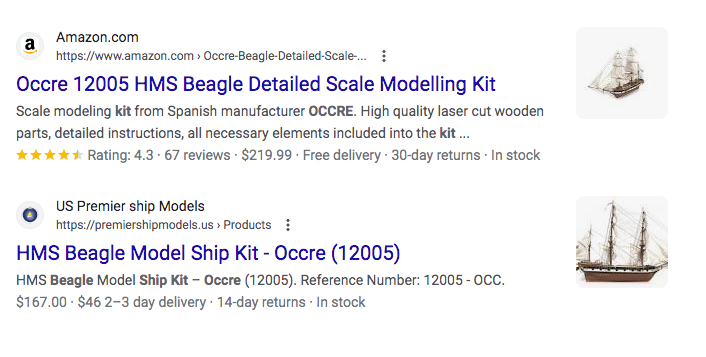
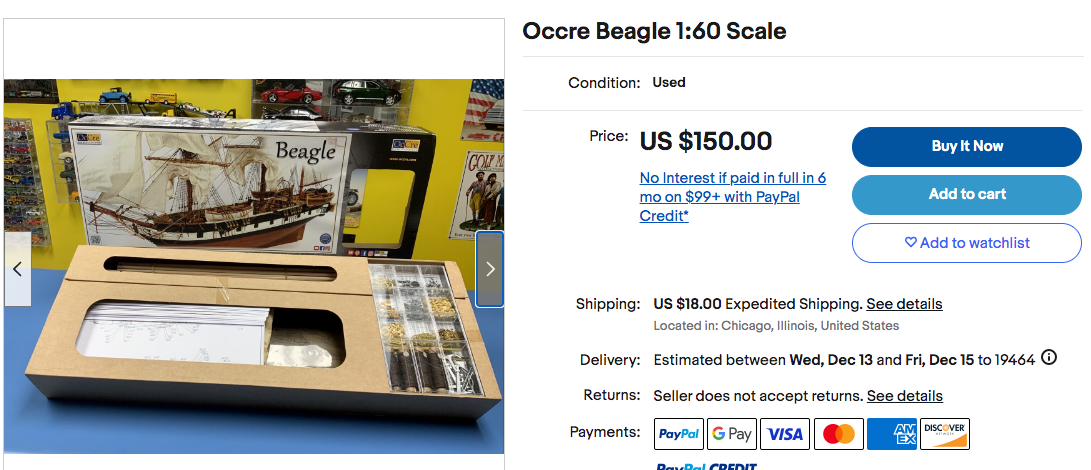
- mtaylor, Keith Black, Canute and 1 other
-
 4
4
-
Hmmmm ... in your home situation you might benefit for either a locking 'secretary' desk or a 'roll top' dest (also with a lock - not only for the top but also for the drawers. Sometimes one can be found in thrift shops, 2nd hand stores. Then you would have to 'put away' less and merely close the top and lock it to prevent curious children from getting at what's inside.
-
Looking over a number of builds of Plank On Bulkhead kits, the builder who glue blocks in to fill the entire space between the bulkhead ... at least those near the bow and stern (where the planks will ben the most) get a nicer fairing and less trouble planking - in terms of low and high spots where one needs either a lot of filler or has to sand the plank perilously thin, respectively.
You don't need the filler wood to be a single piece, since you can just glue in pieces and scraps of basswood (or even dense balsa) helter-skelter until the void is filled. Then the edges that protrude the most can either be coarse rasped away, or belt sanded to 'hog' them ... but don't get too close to the bulkheads themselves. Then you can carve/sand as needed to get nice even fairing, and you will have plenty of substrate to pin or nail planking on.
- BrochBoating, Canute and mtaylor
-
 3
3



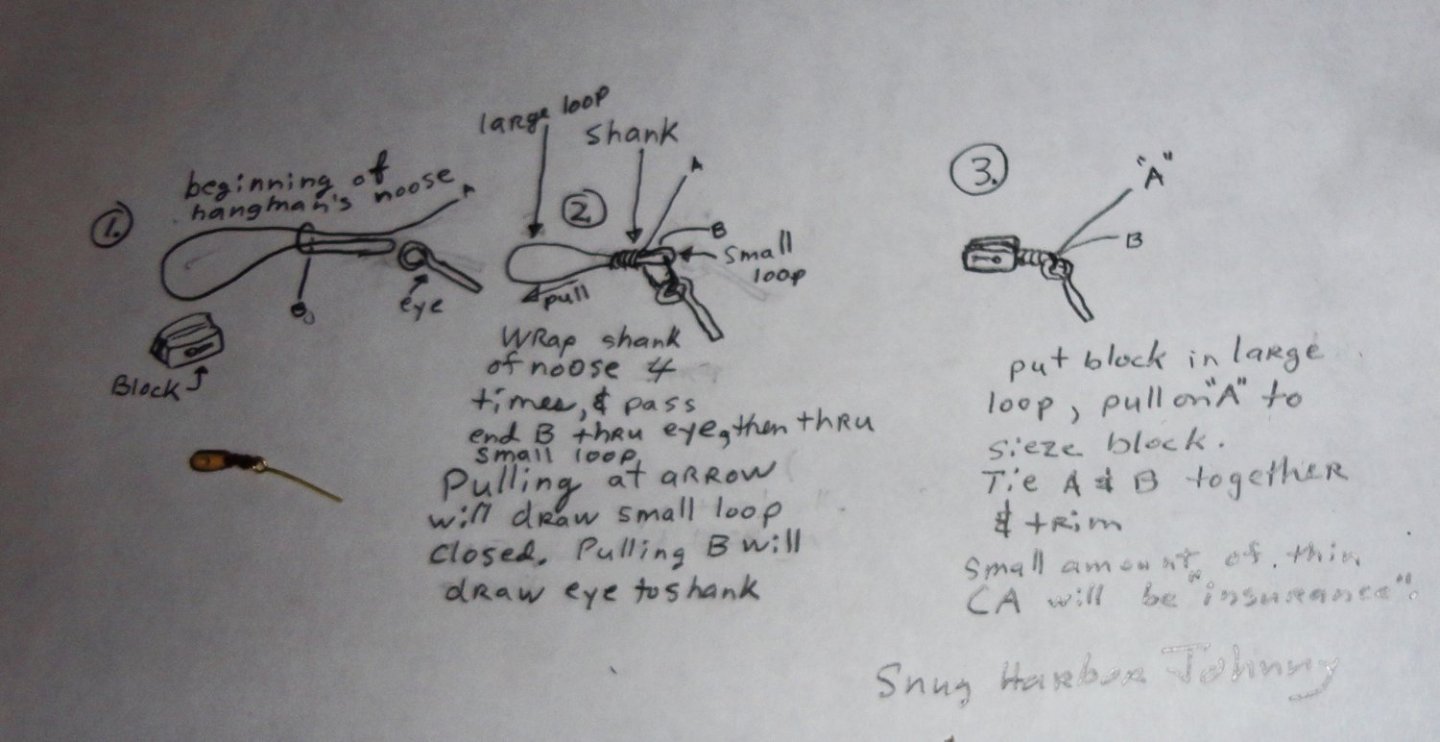
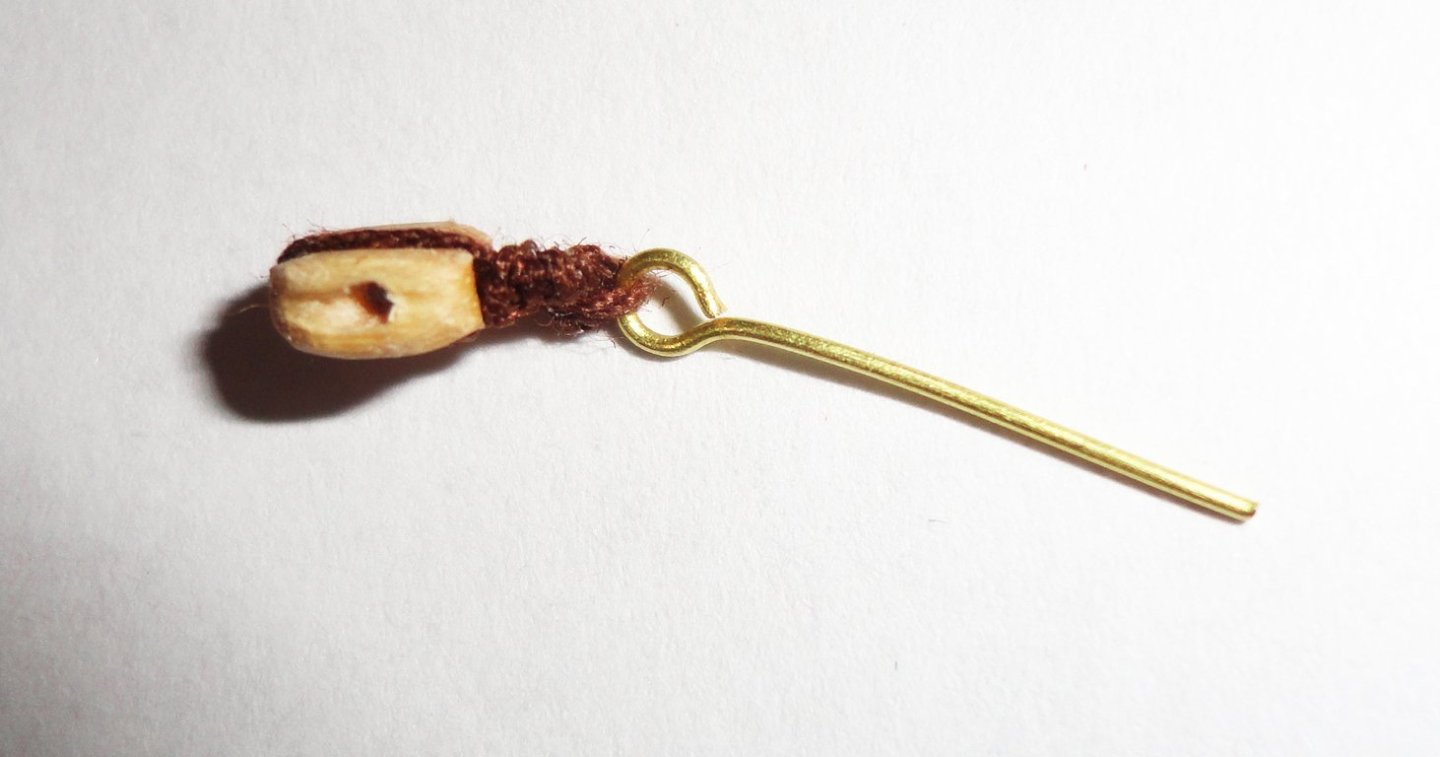
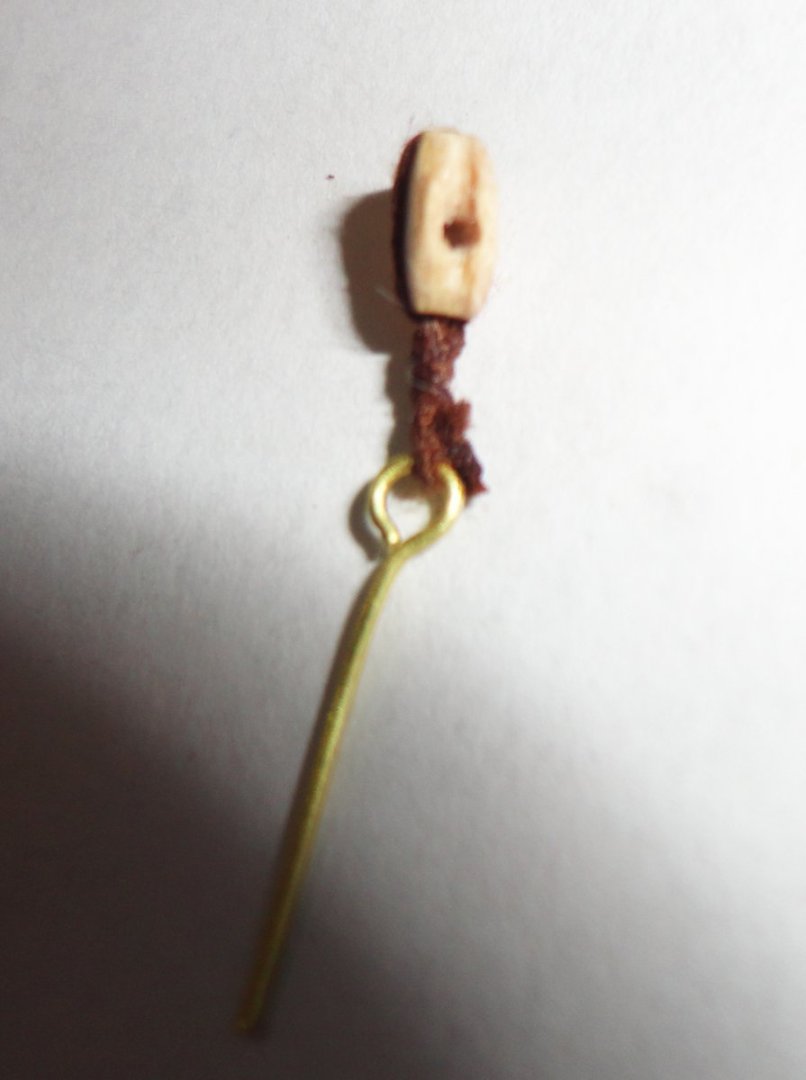
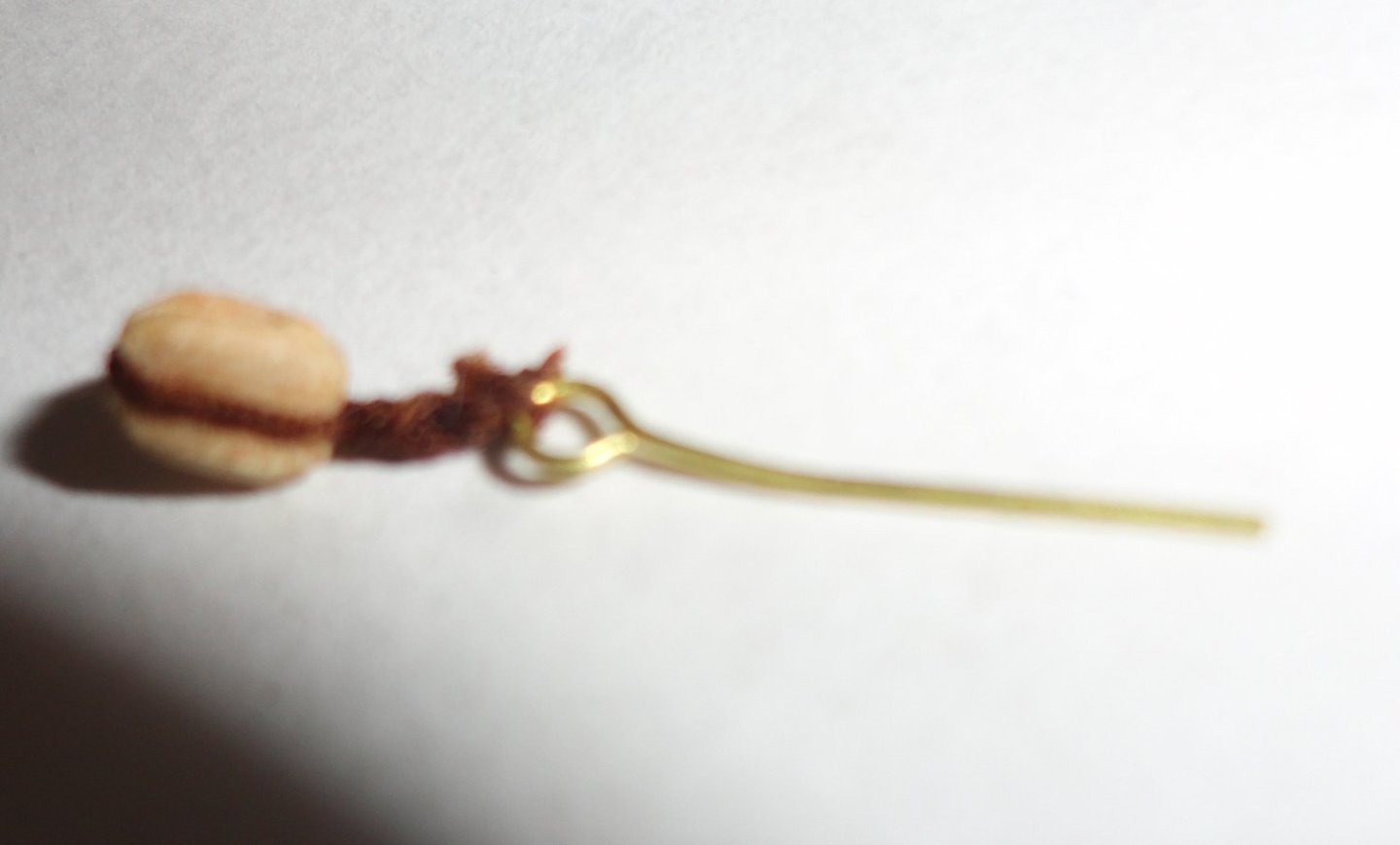

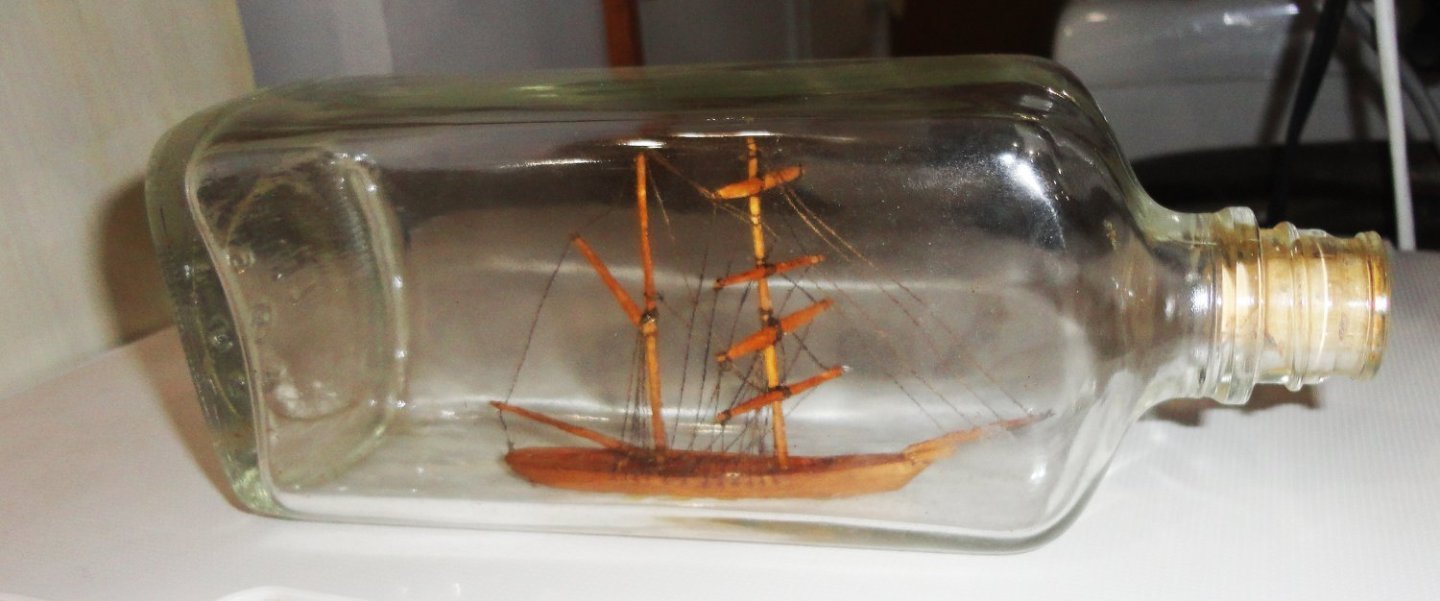
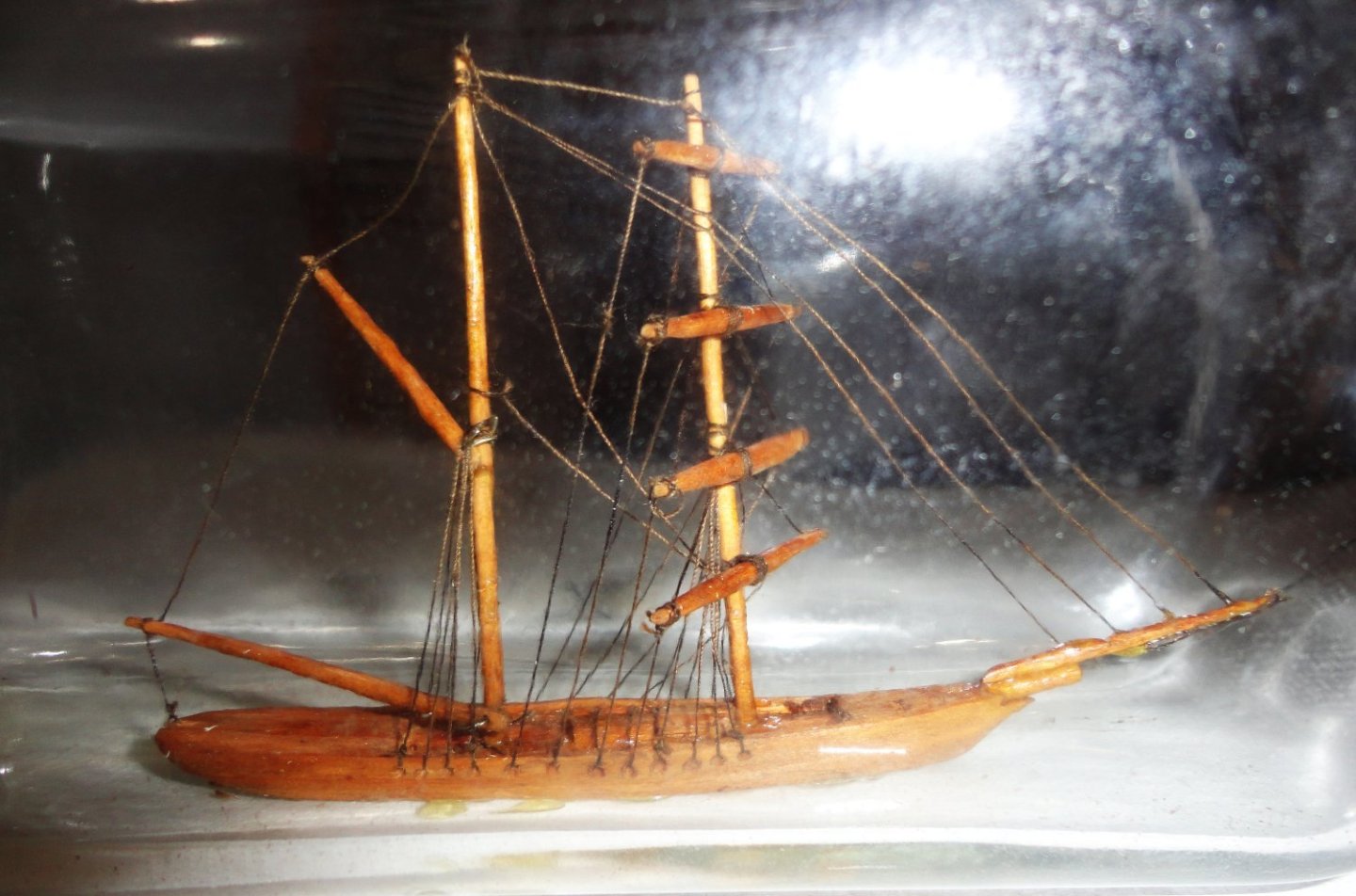
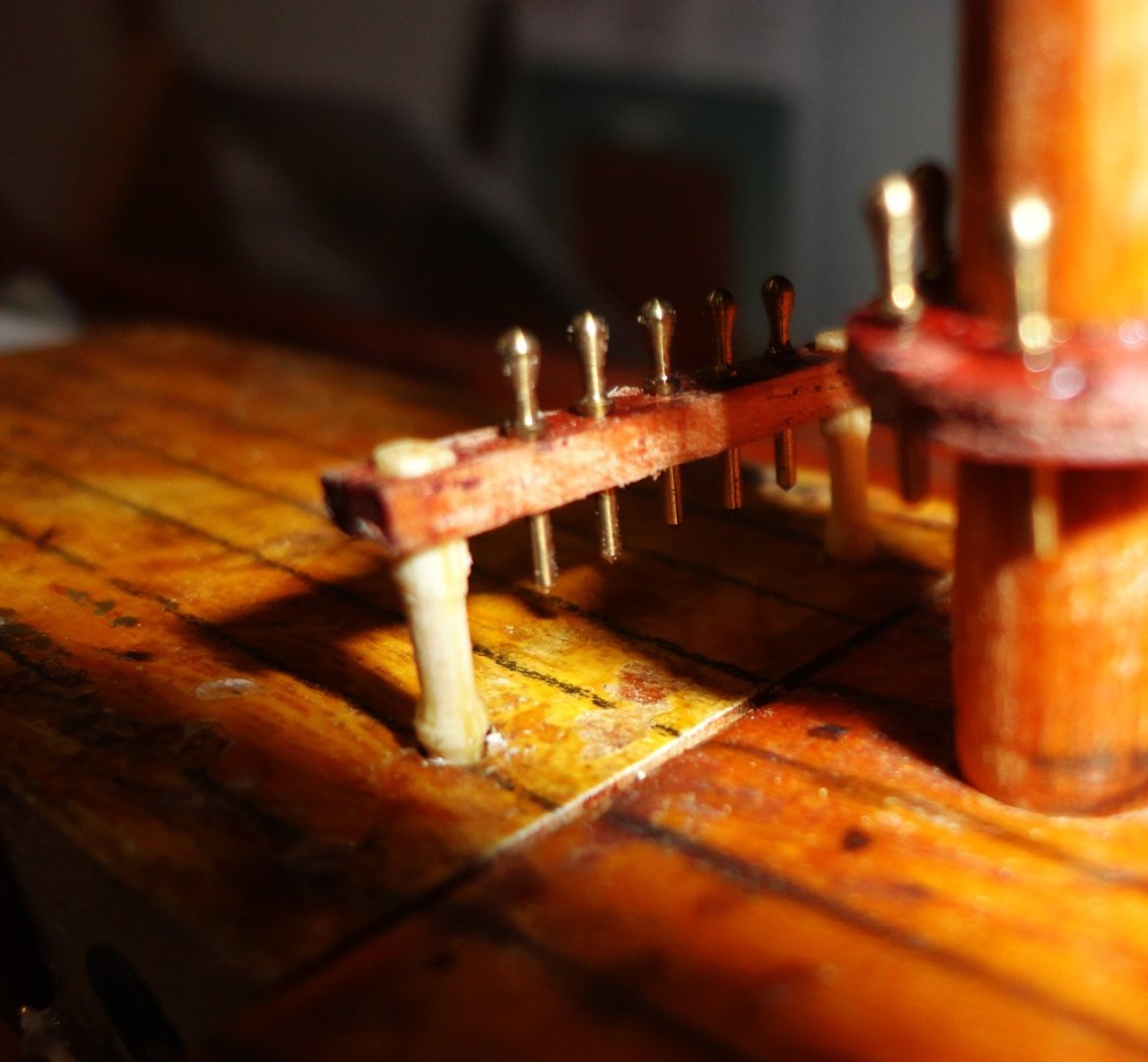
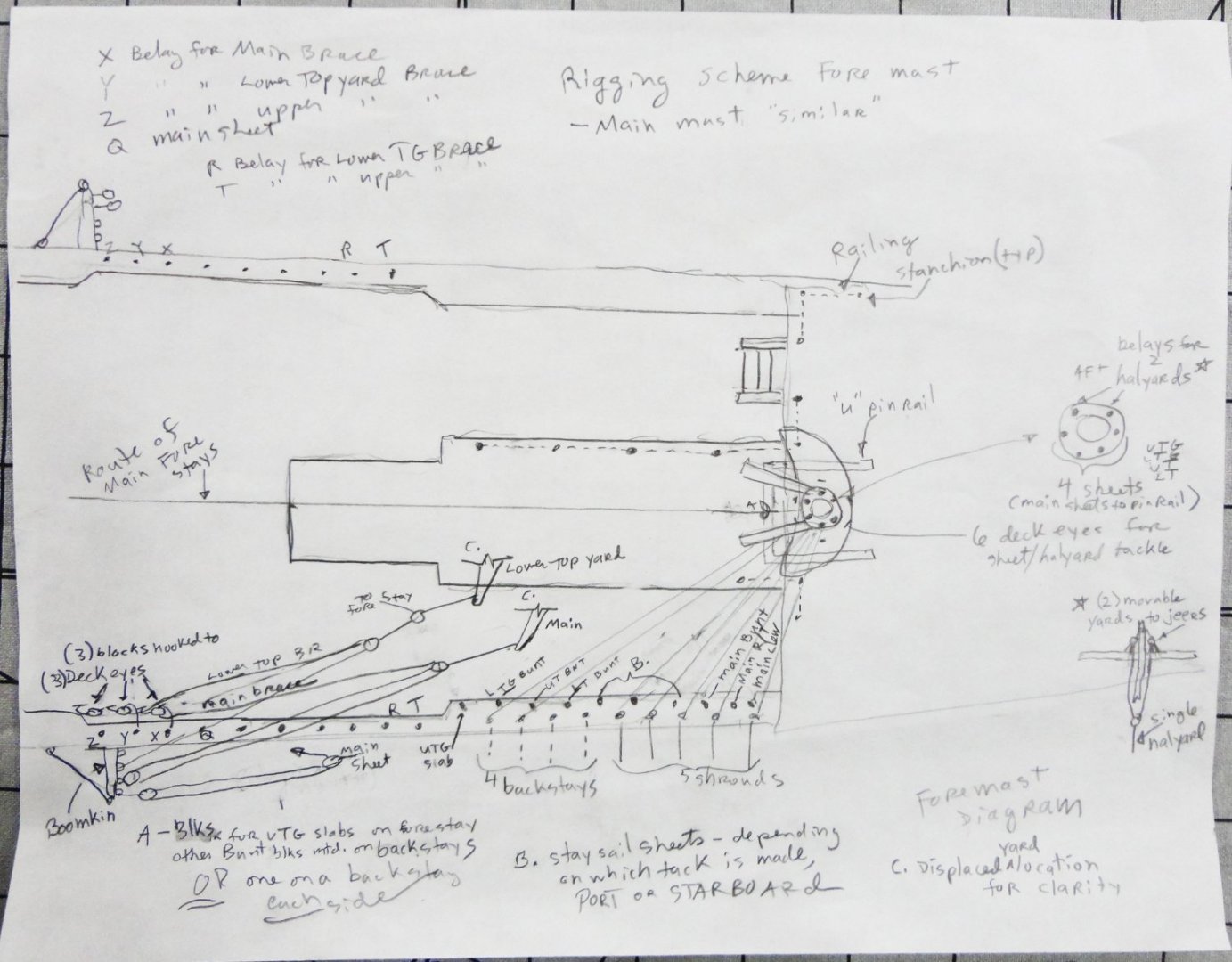
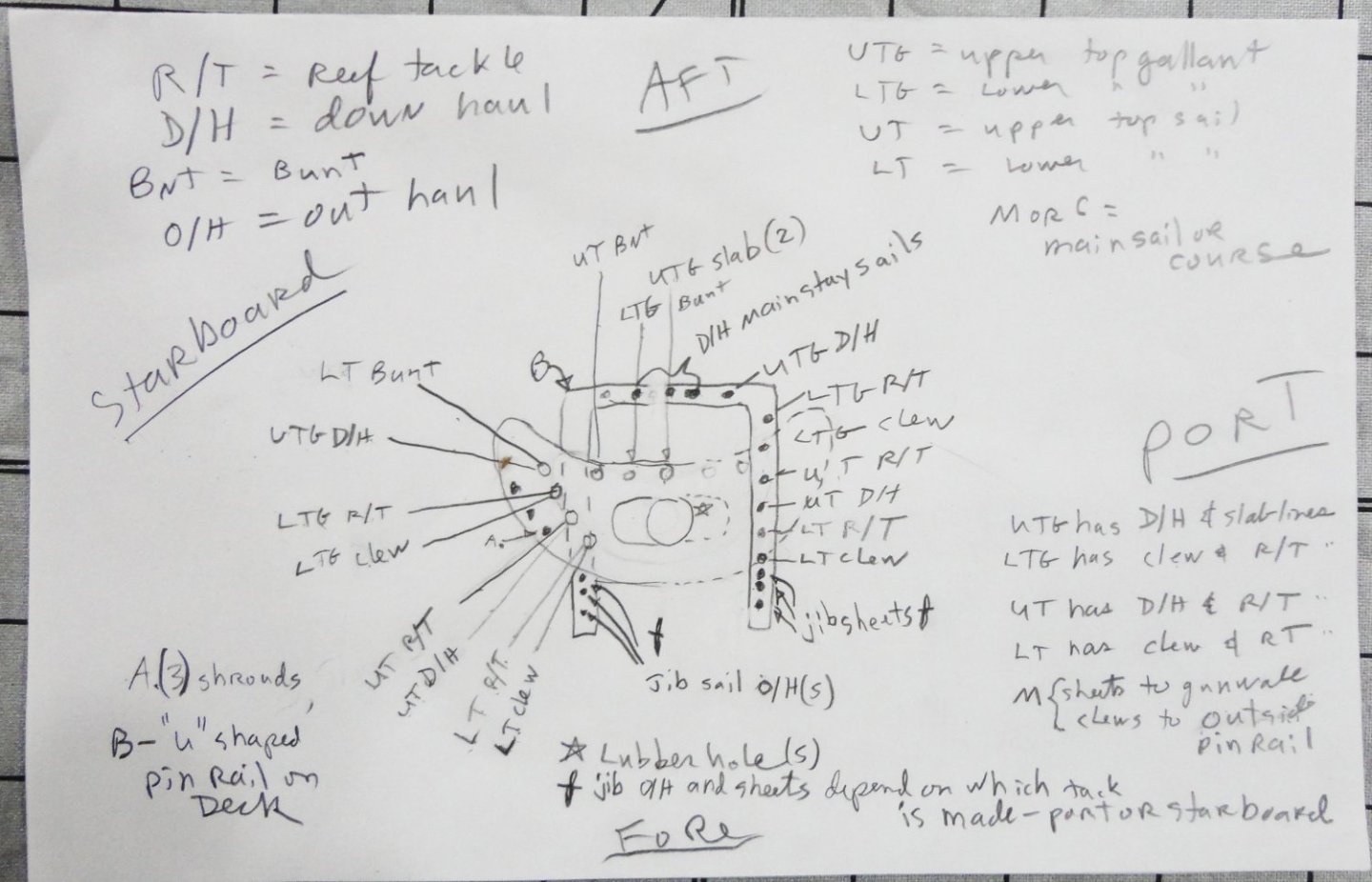
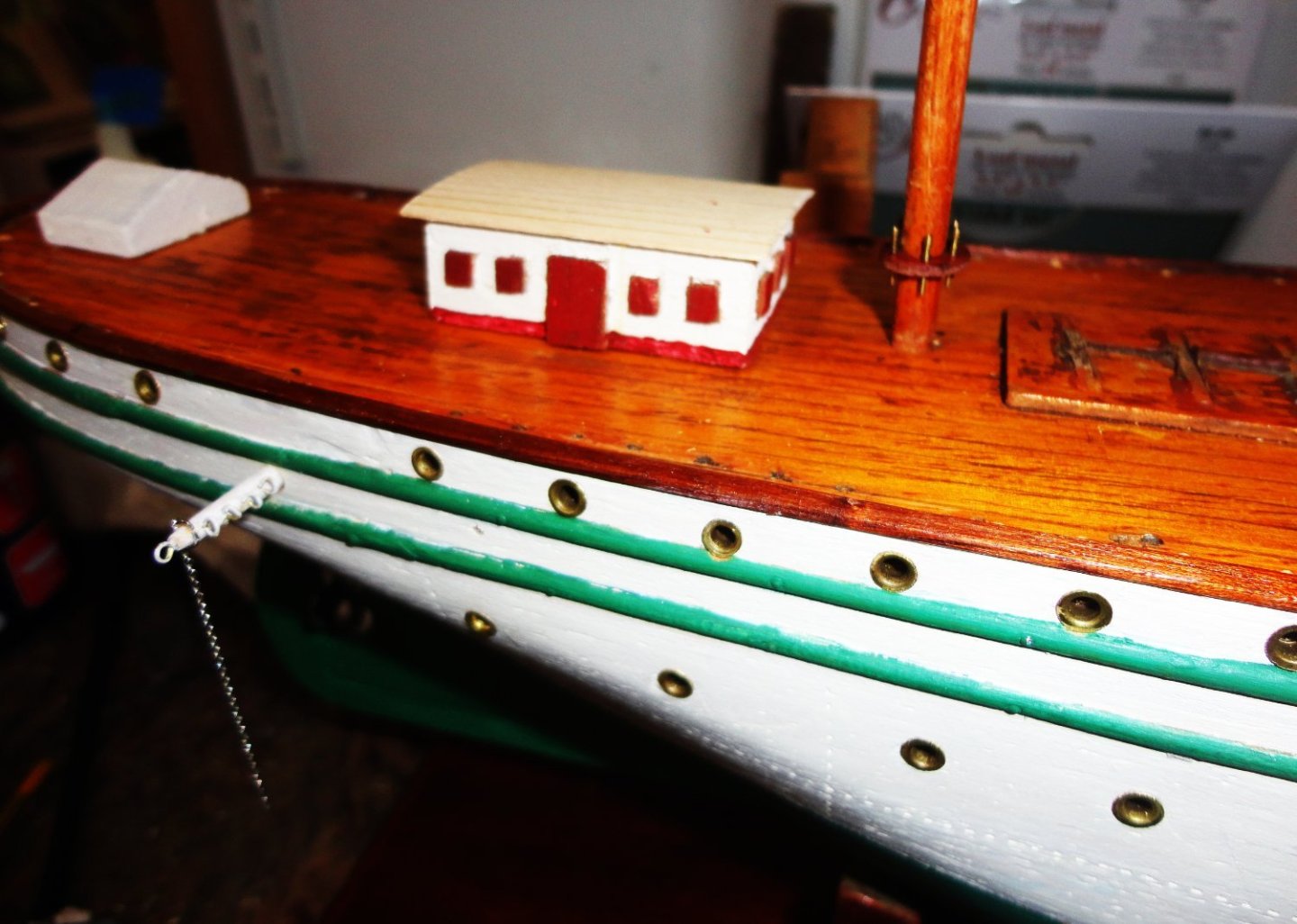
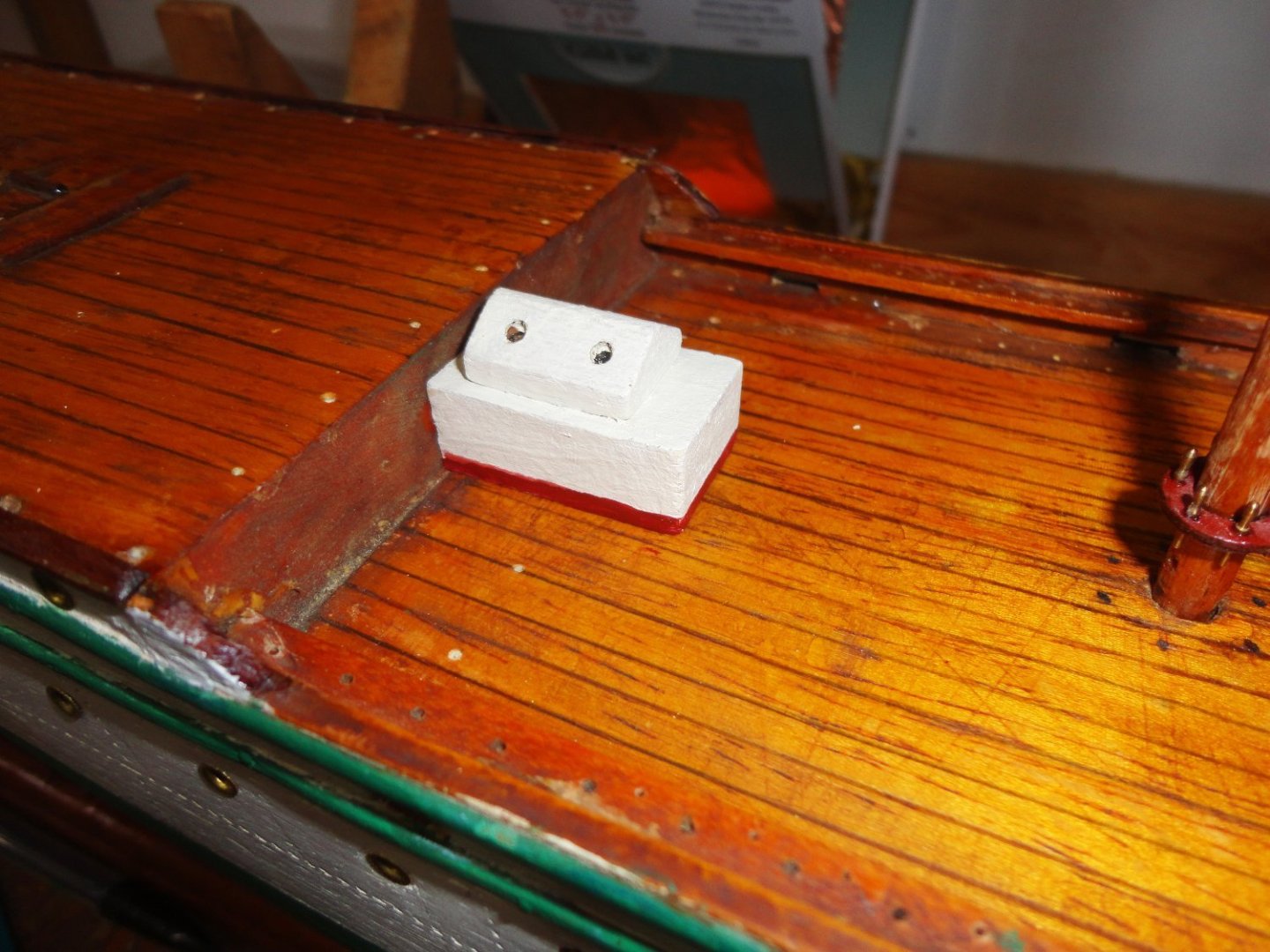
HM Cutter Cheerful 1806 by Erik W - 1:48 scale
in - Build logs for subjects built 1801 - 1850
Posted
Very clean and nice ! as for me ... not so much, but I try.